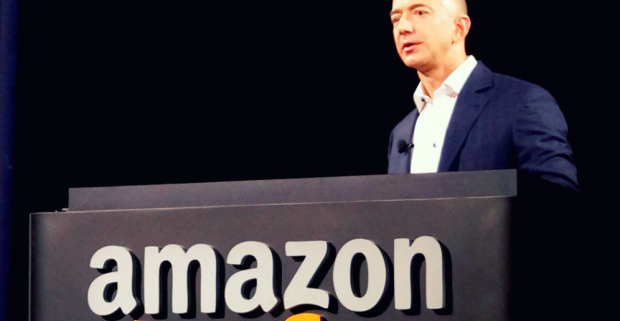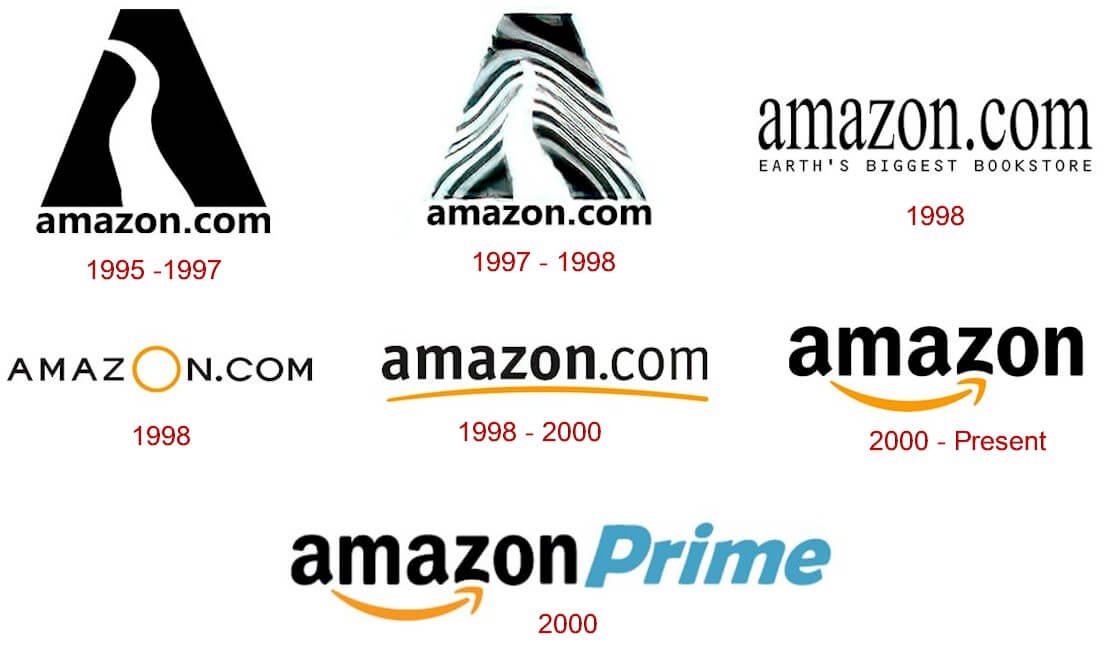The Evolution of the Amazon Logo: A Symbol of Innovation and Global Dominance In 2023
Introduction:
In the realm of e-commerce, Amazon stands tall as the undisputed king. From its humble beginnings as an online bookstore in 1994 to becoming the world’s largest online marketplace, the company has revolutionized the way we shop. A crucial aspect of Amazon’s success lies in its iconic logo, which has undergone a series of transformations over the years.
In this blog post, we will delve into the history of the Amazon logo and explore the significance behind its various iterations.
The Birth of the Amazon Logo:
When Amazon was founded by Jeff Bezos in 1994, the company’s logo was a simple yet symbolic representation. The logo featured a curvaceous, flowing river with the word “Amazon.com” arched above it. This design choice reflected Bezos’ vision of creating a company that would become as vast and mighty as the Amazon River, the largest in the world. The logo represented Amazon’s early days as a bookstore and hinted at the expansive nature of the business yet to come.
The Evolution Begins:
In 1998, Amazon underwent its first logo change. The company introduced a new logo that featured a stylized “A” with a yellow arrow extending from the bottom, forming a smile. This change was significant as it marked Amazon’s shift from being solely a bookseller to a marketplace offering a wide range of products. The smile in the logo conveyed the company’s commitment to customer satisfaction and its aim to provide a pleasant shopping experience.
The Logo Takes Flight:

In 2000, Amazon decided to revamp its logo once again. This time, they opted for a simpler and more streamlined design. The new logo featured a lowercase “a” with a curved underline, resembling a smile, and represented the company’s expanding product catalog. The addition of the arrow, stretching from the “a” to the “z,” cleverly hinted at Amazon’s goal of offering everything from “A to Z.”
The Present-Day Logo:
In 2002, Amazon introduced the logo that remains in use today. The current design features the iconic lowercase “a” with a curved smile underneath, which doubles as an arrow connecting the letters “a” and “z.” This signifies Amazon’s commitment to providing an extensive range of products, from the beginning to the end of the alphabet. The logo is sleek, minimalist, and instantly recognizable, reflecting the company’s ethos of simplicity and efficiency.
The Symbolism Behind the Logo:
Beyond its aesthetic appeal, the Amazon logo holds deeper symbolic meaning. The smile-shaped arrow cleverly represents customer satisfaction and hints at the company’s speedy delivery service. Moreover, the arrow’s shape suggests a sense of forward momentum and progress, portraying Amazon’s drive for innovation and continuous improvement.
Conclusion:

The evolution of the Amazon logo perfectly encapsulates the company’s growth and transformation over the years. From its origins as an online bookstore to its current status as a global e-commerce giant, the logo has adapted to reflect Amazon’s expanding business model and customer-centric approach. The logo’s simplicity and iconic design have contributed to its widespread recognition, making it a powerful symbol of innovation and global dominance in the digital age. As Amazon continues to redefine the boundaries of e-commerce, one thing remains certain—the iconic logo will continue to serve as a visual testament to the company’s remarkable journey and unrelenting pursuit of excellence.
Frequently asked questions (FAQs) about Amazon:
1. What is Amazon?
– Amazon is a multinational technology company and the world’s largest online marketplace. It offers a wide range of products, including electronics, books, clothing, household items, and more. Amazon also provides various services, such as streaming media, cloud computing, and artificial intelligence.
2. How does Amazon work?
– Amazon operates as an online platform where third-party sellers can list and sell their products, while Amazon handles the transaction, customer service, and shipping logistics. Amazon also sells its own products, including Amazon Echo devices, Kindle e-readers, and Fire tablets.
3. How do I create an Amazon account?
– To create an Amazon account, visit the Amazon website and click on the “Account & Lists” tab. From there, select “Create account” and follow the prompts to enter your personal information, including your name, email address, and password. You will also need to provide a valid payment method.
4. How can I shop on Amazon?
– Shopping on Amazon is easy. Simply search for the desired product using the search bar or browse through the various categories. Once you find an item you want to purchase, click on it to view the product details, price, and customer reviews. If you decide to buy it, click on “Add to Cart” and proceed to checkout. Follow the instructions to complete your purchase.
5. How does Amazon Prime work?
– Amazon Prime is a subscription-based service that provides various benefits to members. It offers free two-day shipping on eligible items, access to Prime Video streaming service, Prime Music, Prime Reading, and more. To join Amazon Prime, you can sign up for a monthly or annual membership on the Amazon website.
6. What is Amazon’s return policy?
– Amazon has a customer-friendly return policy. Most items sold and fulfilled by Amazon can be returned within 30 days of delivery for a full refund. Third-party sellers on Amazon may have their own return policies, so it’s important to check the specific seller’s return policy before making a purchase.
7. How does Amazon ensure customer satisfaction?
– Amazon places a strong emphasis on customer satisfaction. They provide customer reviews and ratings for products, offer a responsive customer service team to address any concerns or issues, and provide a hassle-free return process. Amazon also encourages sellers to maintain high-quality products and services through performance metrics.
8. What is Amazon Prime Day?
– Amazon Prime Day is an annual shopping event exclusively for Amazon Prime members. It offers special deals, discounts, and limited-time offers on a wide range of products across various categories. Prime Day typically takes place in July and is known for its significant savings and sales.











 digitalidiots.in
digitalidiots.in


You are mistaken. I suggest it to discuss.
——
https://ssl.by/tags/aws/
Lost labour.
——
https://colored.club/post/245283_hola-estoy-planeando-un-viaje-a-murcia-y-necesito-un-alquiler-de-coches-murcia.html
I am ready to help you, set questions. Together we can find the decision.
——
https://the.hosting/pl/help/your-password-does-not-satisfy-the-current-policy-requirements-mysql-chto-jeto-za-oshibka